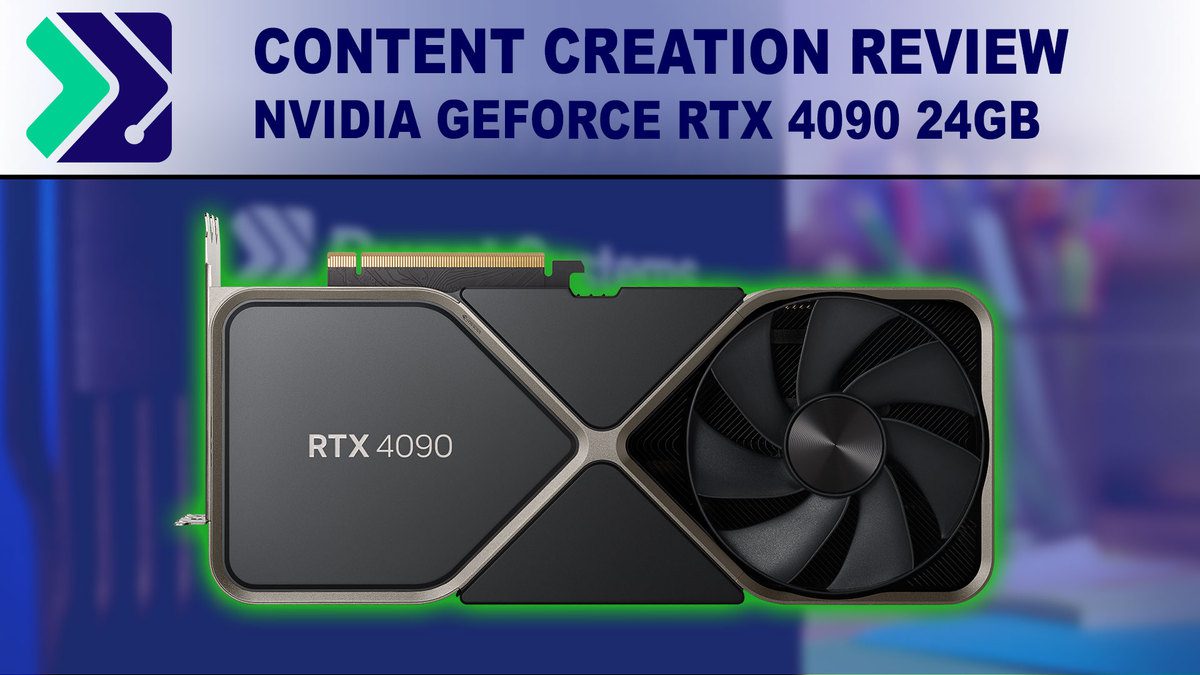How Well Does the NVIDIA GeForce RTX 4090 Perform for Content Creation?
NVIDIA tends to give us great performance gains whenever they launch a new series of GPUs, and the new RTX 4090 is no different. It may not have more VRAM than the previous generation (24GB), but for applications that can benefit from having a more powerful GPU, the RTX 4090 can give you a massive boost to performance.
For video editing, the big winner is DaVinci Resolve Studio, as it makes more use of the GPU (and multi GPU configurations) than any other NLE currently on the market. In the instances where the GPU is the primary bottleneck (OpenFX and noise reduction), the RTX 4090 is around 40% faster than the previous generation RTX 3090, or just over 2x faster than the older RTX 2080 Ti. This isn't quite enough for a single RTX 4090 to match a dual RTX 3090 setup, but it does bring it to within a very respectable 10%.
Resolve is also one of the few video editing applications that can take advantage of multiple GPUs, and we found that going from one RTX 4090 to two gave us a 55% increase in performance. This is right in line with what we see from previous generation cards like the RTX 3090, so it is good to see that we are not yet hitting any sort of CPU bottleneck.
Unreal Engine, being a real-time engine, benefits even more from powerful GPUs. Testing across a variety of scenes, from basic game environments to high-end Virtual Production sets, with and without ray tracing, the RTX 4090 averaged around 85% higher FPS. For those in ArchViz, that translates to faster render times, or smoother VR experiences. Users in Virtual Production who are capped at 30 or so FPS will be able to do more on-screen, making their sets even more realistic.
GPU rendering in Octane, Redshift, V-Ray and Blender sees nearly a doubling in performance over the RTX 3090 and 3090 Ti. All of these renderers also benefit from using multiple GPUs, and it is typical to see an 80-90% speed up by adding a second video card to a renderer. We would see even more performance by using more than two GPUs, but you will almost always be limited to just 1-2 cards due to the massive size and power constraints of these new cards.
A big concern for this generation is the lack of NVLink. With it, GPU rendering would use this feature to pool the VRAM of two video cards to be able to hold larger, more complex scenes. Exceeding the VRAM of a GPU would fall back to the system RAM, dramatically decreasing performance, or crashing the system. Without NVLink, VRAM pooling isn't even an option.
This missing NVLink is going to be an even bigger concern for many in Virtual Production, especially those filming on large LED volumes. Currently, they use multiple GPUs so one video card can be dedicated to the inner frustum, and then transfer that frame to the other GPU to display on the wall. Not everyone in this space opts for this workflow, as it can be tricky to get set up, but when it works, it allows for much better performance. There are other options on the horizon, but nothing concrete at the time of writing. Not many users of this workflow would use a GeForce card anyway due to its lack of Quadro Sync support, but it is worth being aware of ahead of the RTX 6000 refresh.
Beyond NVLink, another concern we have about the RTX 4090 is simply how much power it demands (and how much heat output that will translate to). The physical design of the card is going to make using more than two RTX 4090 cards impossible without liquid cooling, but even then, you will find yourself to be power limited very quickly. The Founders Edition cards we are using straight from NVIDIA required a total of four(!) 8-pin PCIe plugs, which combined with the one plug required for our WRX80 motherboard, meant that we were using every single available PCIe power cable from our 1600W power supply in order to test dual RTX 4090 cards.
NVLink and power concerns aside, however, there is no question that the GeForce RTX 4090 24GB is an extremely capable GPU. Anytime we see performance gains of 2x over the previous generation cards, even in just a few workflows, it is hard not to be impressed. In the end, whether the RTX 4090 is going to be worth the investment for you is going to come down to your individual workflow, and what kind of ROI (return on investment) you might expect given the time savings it would be able to give you. But, if you are often limited by the performance of the GPU in your system, the RTX 4090 is almost certain to be a solid investment.



